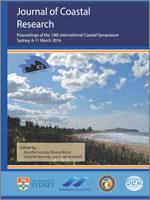Dillenburg, S.; Hesp, P.; Cecílio, R., and Miot da Silva, G., 2016. Wave Energy as a Control on Dune Development on two Regressive Barriers in Southern Brazil. In: Vila-Concejo, A.; Bruce, E.; Kennedy, D.M., and McCarroll, R.J. (eds.), Proceedings of the 14th International Coastal Symposium (Sydney, Australia). Journal of Coastal Research, Special Issue, No. 75, pp. 273–277. Coconut Creek (Florida), ISSN 0749-0208.
Two regressive barriers (Cassino and Curumim) were developed during the middle and late Holocene along gentle re-entrants of the Rio Grande do Sul coast, and they have prograded up to 17 km and 5 km, respectively. While Cassino is marked by a surface morphology characterised predominantly by foredune ridges, Curumim displays a surface completely covered by widely spaced ridges, corresponding to phases of transgressive dunefield formation. As wave period and shoreline orientation are very similar for both barriers, and considering that they are subjected to the same deepwater wave climate, the substantial surface morphological differences between the barriers is, at least in part, a direct consequence of variations in wave height at the two sites. In addition, there is a significant difference in potential sand transport and wind power between the two sites. As transgressive dunefields and parabolic dunes can develop as a consequence of foredune destabilization, followed by wind action, it is very possible that at Cassino, during barrier development storm waves were not strong enough to destabilised the foredune system and, in addition, if storm scarping occurred, winds were not competent to destabilise the foredunes, thus providing conditions for the formation predominantly of a foredune ridge plain. Only occasionally, presumably during very strong storms (or multiples thereof), foredune destabilization has resulted in dune transgression. At Curumim, either storm waves and higher wind strengths were more effective in dune destabilization, or foredunes rarely developed allowing the formation of multiple phases of transgressive dunefields during barrier progradation.





